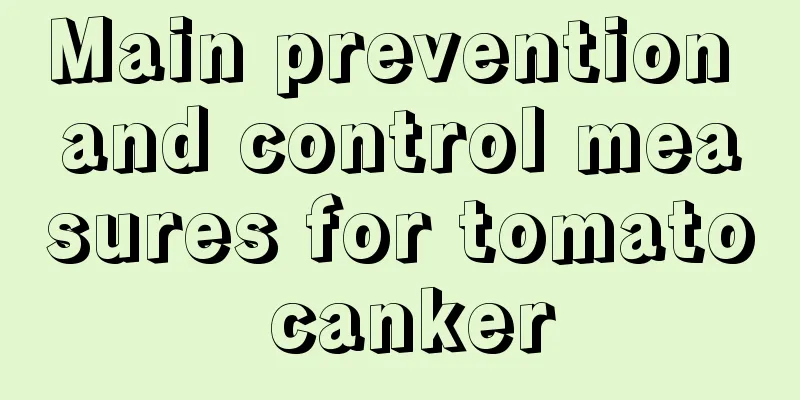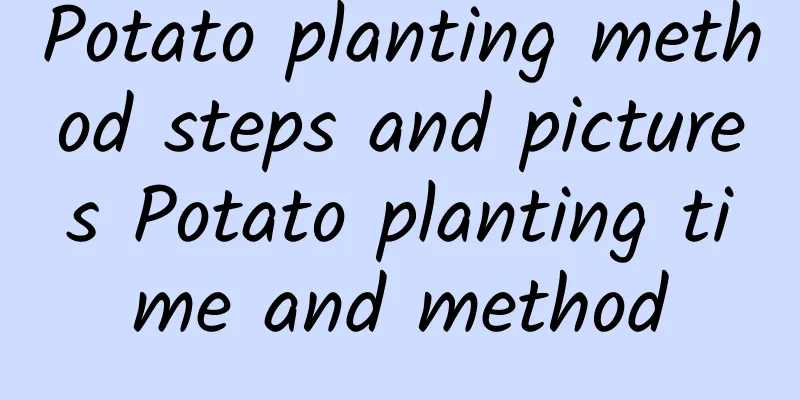Main prevention and control measures for tomato canker

|
Tomato canker , also known as bacterial canker, spreads rapidly, causes serious harm, and is difficult to prevent and control. Growers must take timely prevention and control measures. Below, the editor will introduce the main prevention and control measures for tomato canker disease. Let’s take a look. 1. Symptoms 1. Disease in the seedling stage The disease usually starts from the leaf margins of the lower leaves of the plant. The diseased leaves begin to curl vertically upward and gradually wilt and droop from the bottom to the top, as if they are short of water. The edges and veins of the diseased leaves turn yellow, and the leaves turn brown and die. Some seedlings develop ulcer-like sunken streaks on the hypocotyl or petiole, and the pathogenic strains become dwarfed or die. 2. Disease on stems The diseased bacteria spread rapidly in the phloem and pith of the stems. Initially, the lower leaves wilt or curl, as if lacking water, and one side or part of the leaflets wilt. The inside of the stem turns brown. It expands upward, and its length can extend from one node to several nodes. In the later stage, cavities of varying lengths are produced, and finally it sinks or cracks. The stem becomes slightly thicker and produces many adventitious roots. When it rains a lot or the humidity is high, the pus will overflow from the diseased stems or petioles or attach to them, forming a white, dirty substance. Later, the stems will turn brown and even hollow, and finally the whole plant will die, and the upper top leaves will become green and withered. 3. Fruit disease When the fruit is infected, the pathogen enters through the fruit stalk, and the young fruit appears wrinkled and deformed. Circular spots form on the fruit surface. They are white and sometimes raised. There are many individual spots of uniform size, brown in the middle, and shaped like "bird's eyes". They are called bird's eye spots. Sometimes the spots are connected together. II. Prevention and Control Measures 1. Implement crop rotation: Severely diseased plots can be rotated with non-Solanaceae crops for more than 3 years to reduce the base number of soil pathogens. 2. Dip the roots before planting: Dip the roots with 150 times the concentration of 300 million/g Bacillus subtilis. For protection and prevention of disease, it can be used together with biological fertilizer during planting. 3. Strengthen field management: avoid pruning and cutting branches before the rain has dried up, drain water in time after the rain, and remove and burn diseased plants in time. When pruning and trimming branches, it should be done on a sunny morning when there is no dew to prevent the invasion of pathogens. 4. Application: Add 30 grams of 47% copper oxychloride wettable powder to 2 kilograms of water and apply it to the affected area. In severe cases, apply it twice and the effect will be significant. 5. Chemical control Before the disease occurs, you can spray 600-800 times of 20% chlorothalonil wettable powder, or 600 times of 3% sinomenine wettable powder, or 500 times of 2% kasugamycin aqueous solution, or 700 times of 20% thiophanate-methyl suspension, or 800 times of 77% copper hydroxide wettable powder on the entire plant, focusing on spraying the base of the stem. Spraying once every 7 days and regular prevention and control can effectively prevent and control the occurrence of tomato canker. The above are the main prevention and control measures for tomato canker. When tomato canker is severe, it can cause large areas of the field to wilt and die. Therefore, growers must pay attention and take timely prevention and control measures.
|
<<: Lotus's requirement for water. Will the lotus die in the rain?
>>: What should I do if I water Clivia too much? What is the reason for the yellowing leaves?
Recommend
Autumn care methods for Paphiopedilum
Autumn maintenance Fertilization When applying fe...
Can bamboo cypress be hydroponically cultivated? Hydroponics methods and precautions
Can bamboo cypress be hydroponically cultivated? ...
How to propagate wild roses
Cutting propagation Time choice: If it is under n...
When do geraniums bloom?
When does it bloom? The flowering period of geran...
How to make delicious eggplant
1. Homemade Eggplant 1. Put the eggplant strips o...
How to propagate cherry trees and what to pay attention to
Cherry Blossom Tree Propagation Method Cherry blo...
How to distinguish between the succulent plants Purple Pearl and First Love
Similarities between Purple Pearl and First Love ...
How to grow Buddha's hand
1. Maintenance methods 1. Soil: Sandy soil with a...
How to grow featherleaf lavender
1. Maintenance methods 1. Temperature: Its resist...
Growth environment conditions and characteristics of Metasequoia
Growth environment conditions and requirements of...
Common hyacinth pests and diseases control methods
Yellow rot symptom When the disease occurs, many ...
The difference between the Red Leaf Festival and the Fire Festival
1. Different varieties The "variety" me...
Cucumber planting time and method
Spring planting of cucumbers usually takes place ...
The main value of monkey orchid
The main value of monkey face orchid: ornamental ...
Will bougainvillea freeze to death in winter? In the north, winter maintenance methods
1. Will I freeze to death? Bougainvillea has rela...









